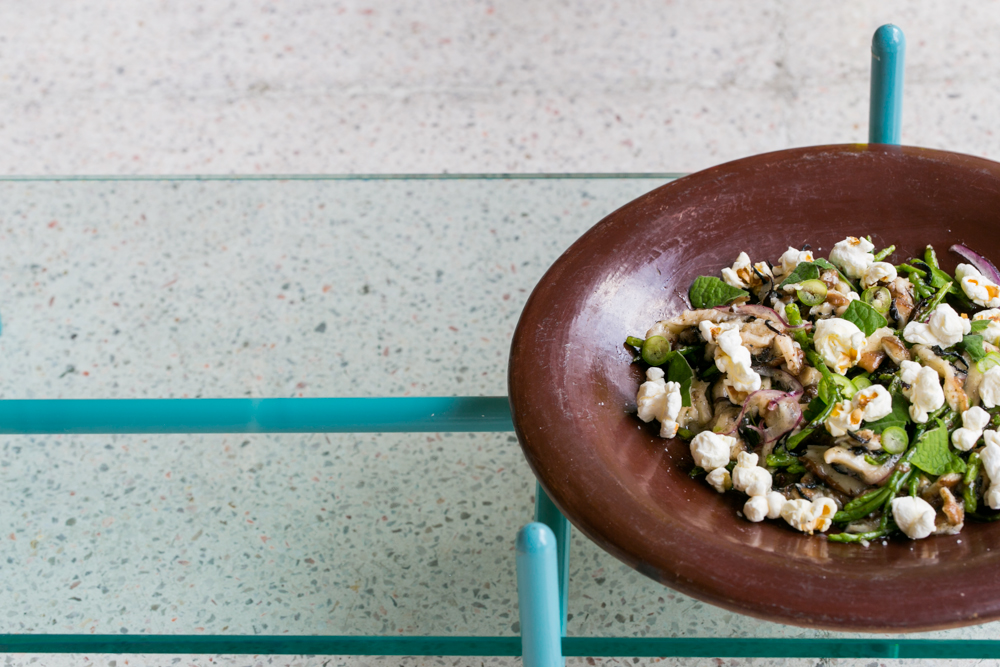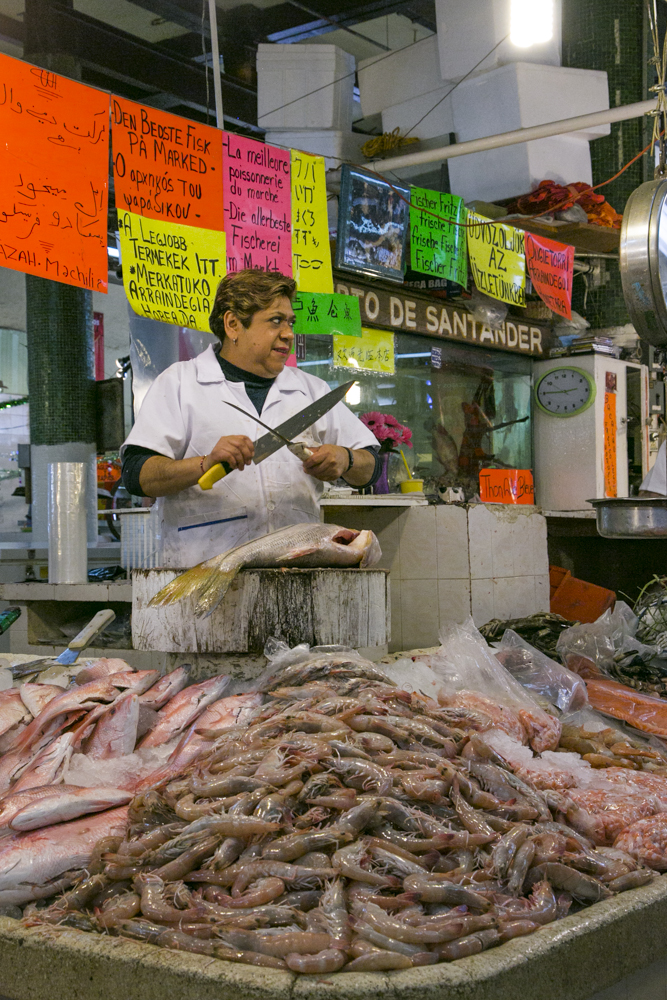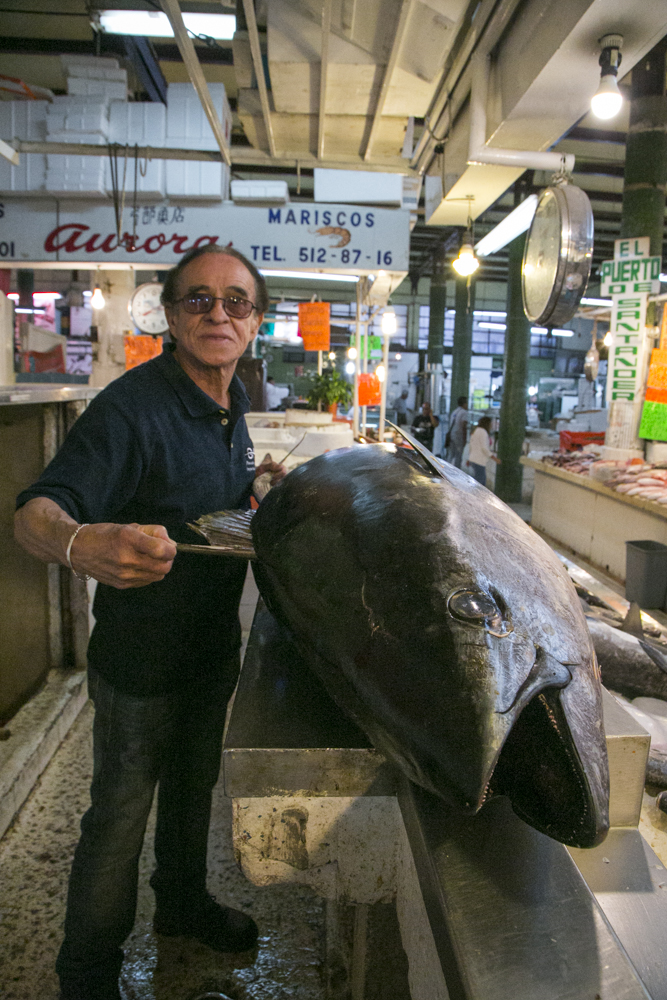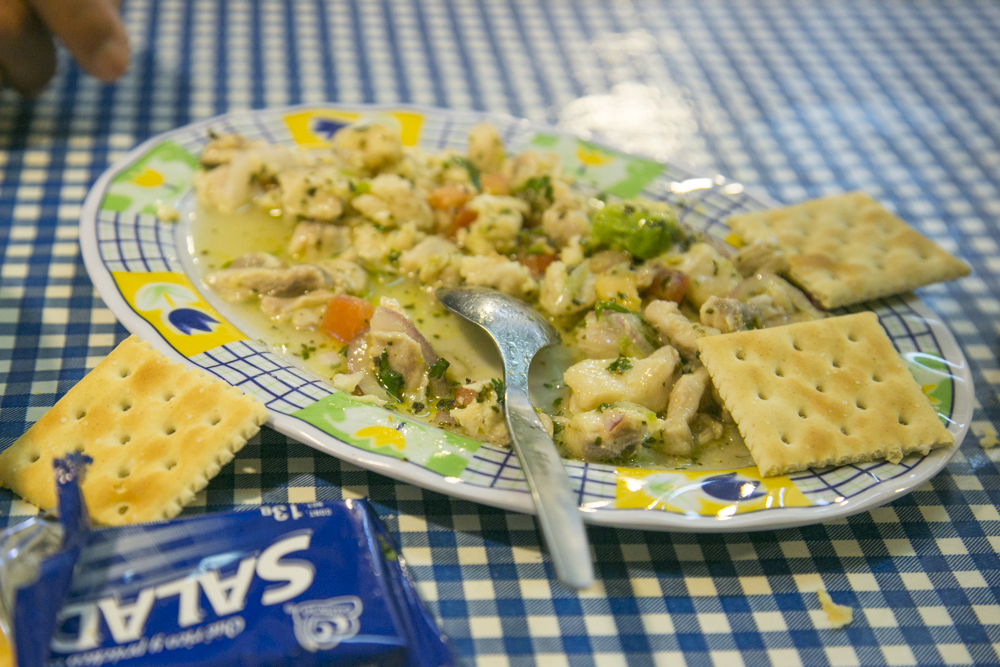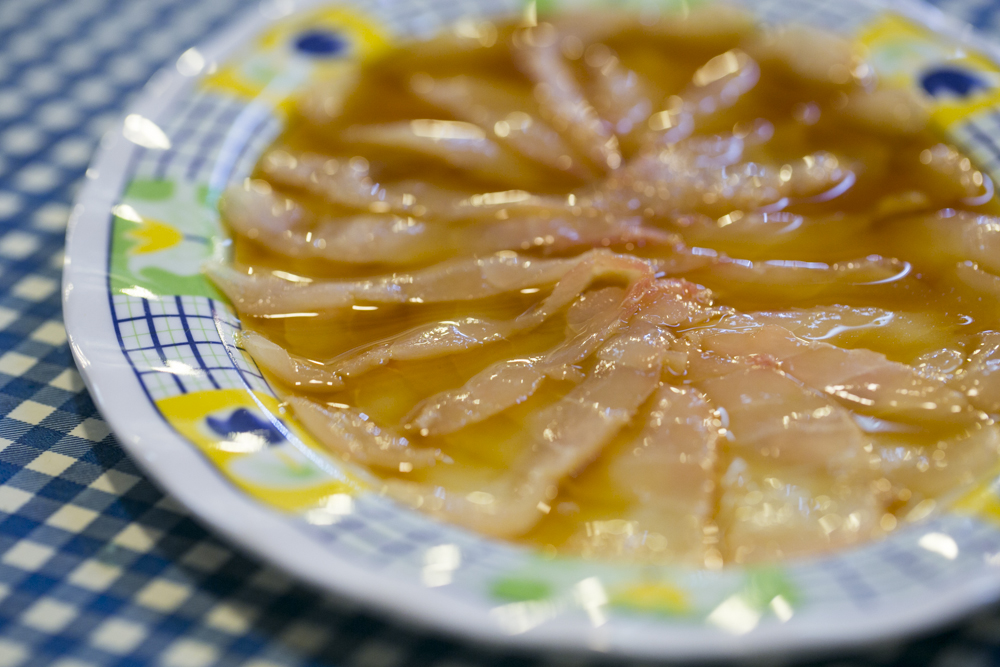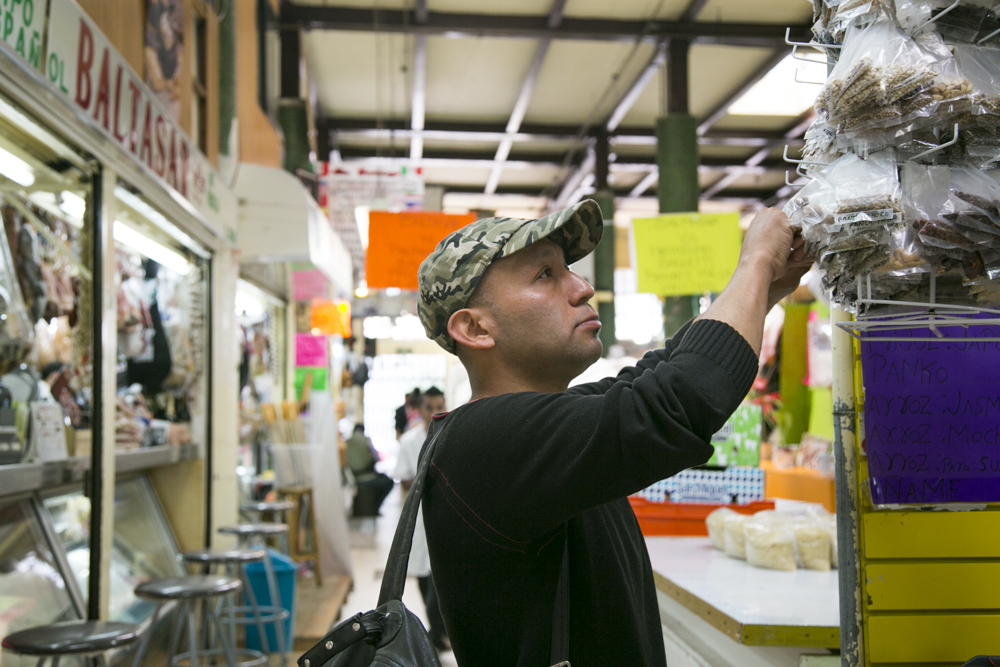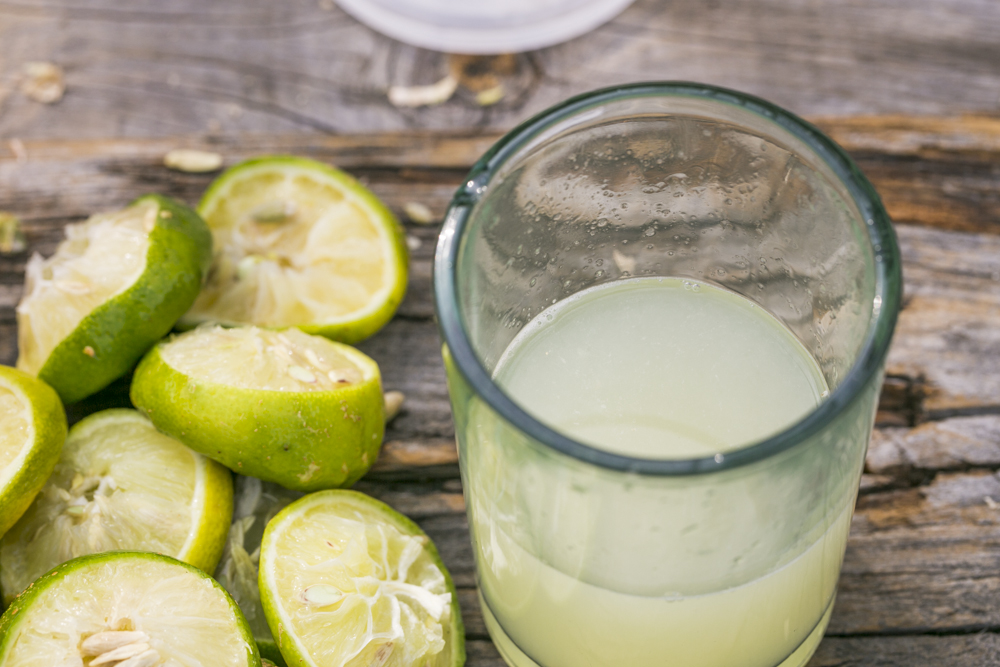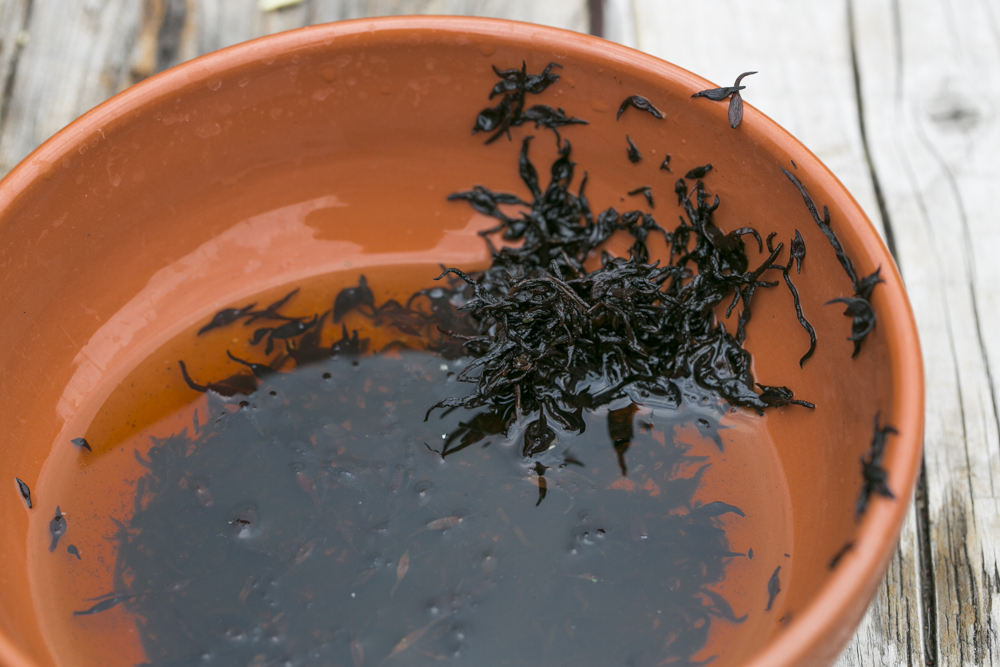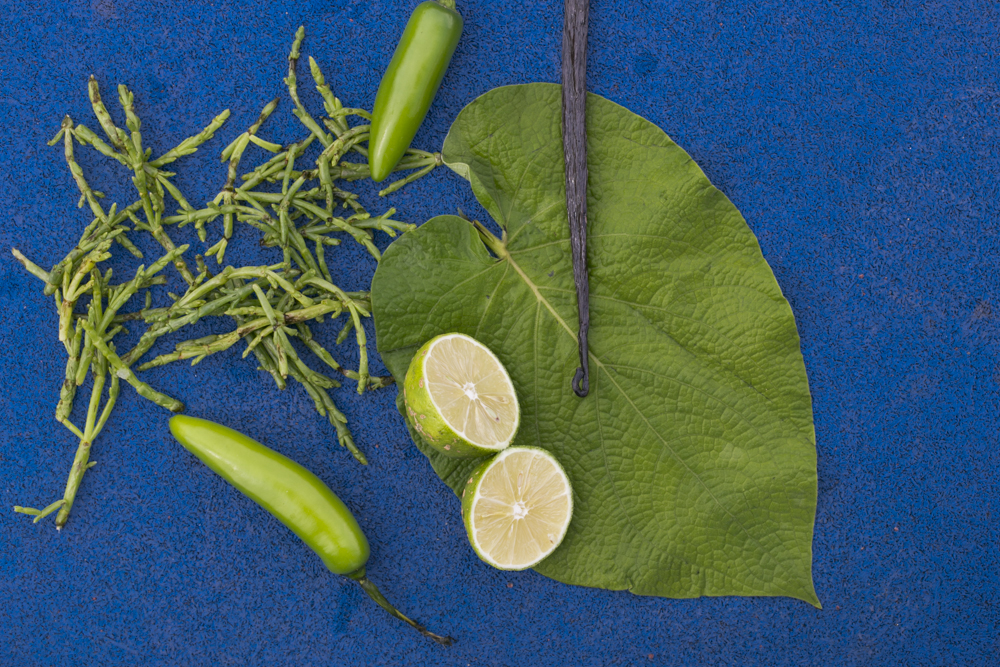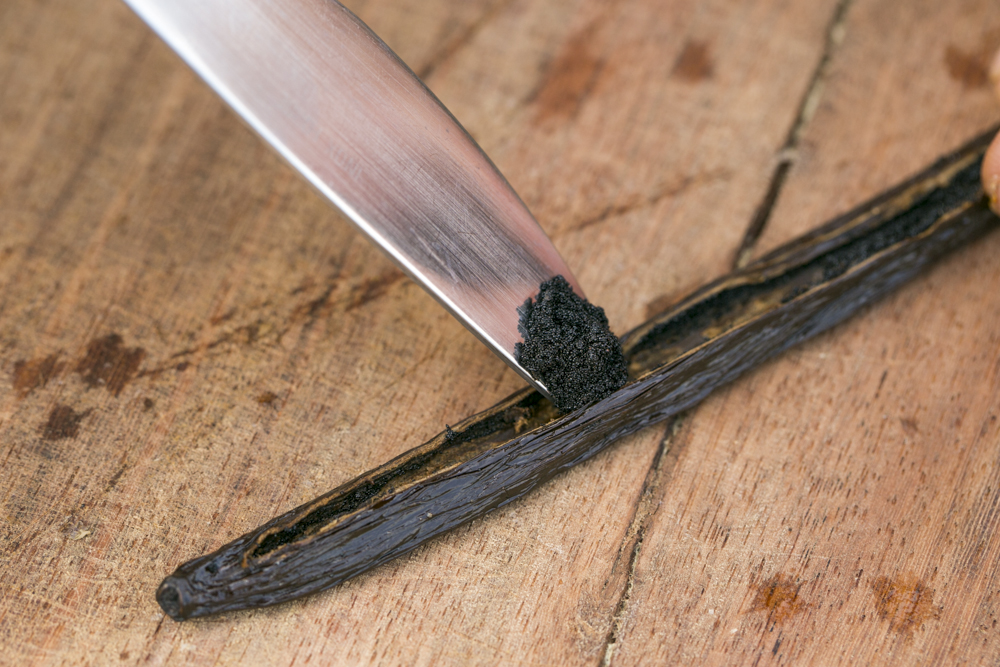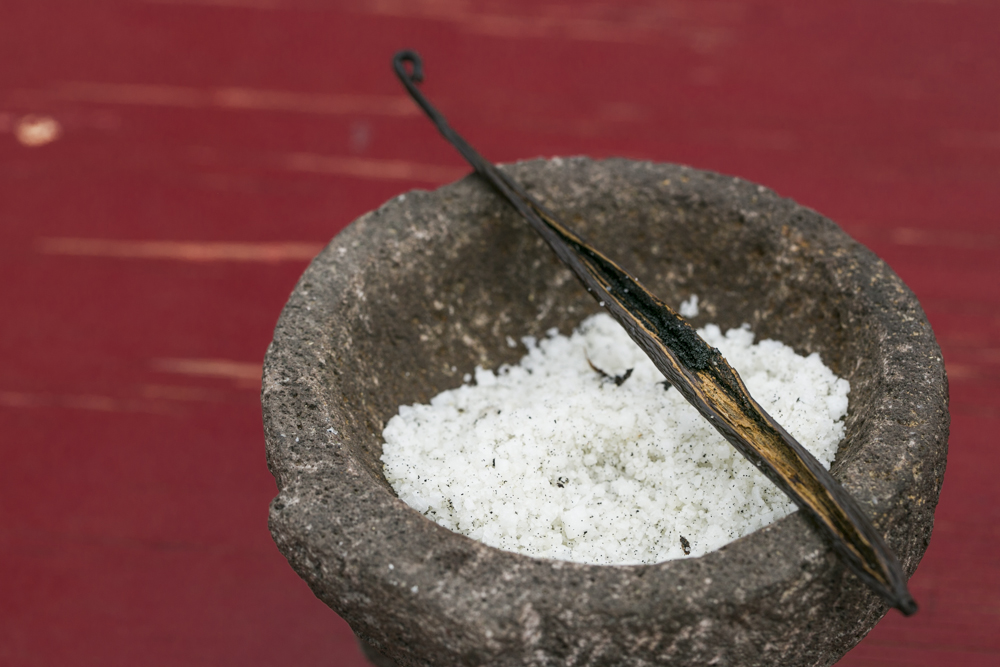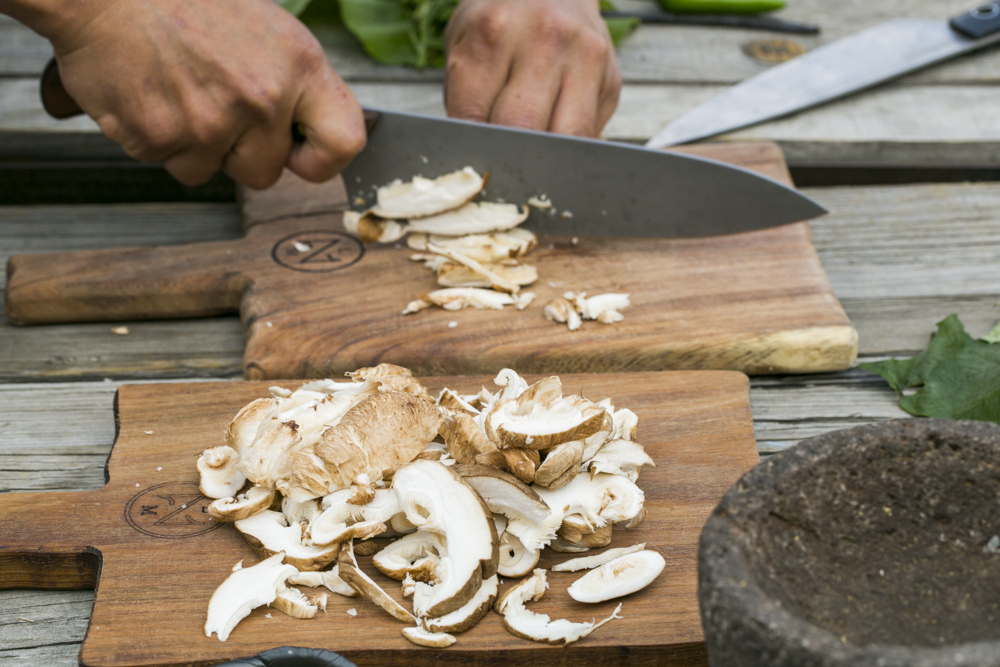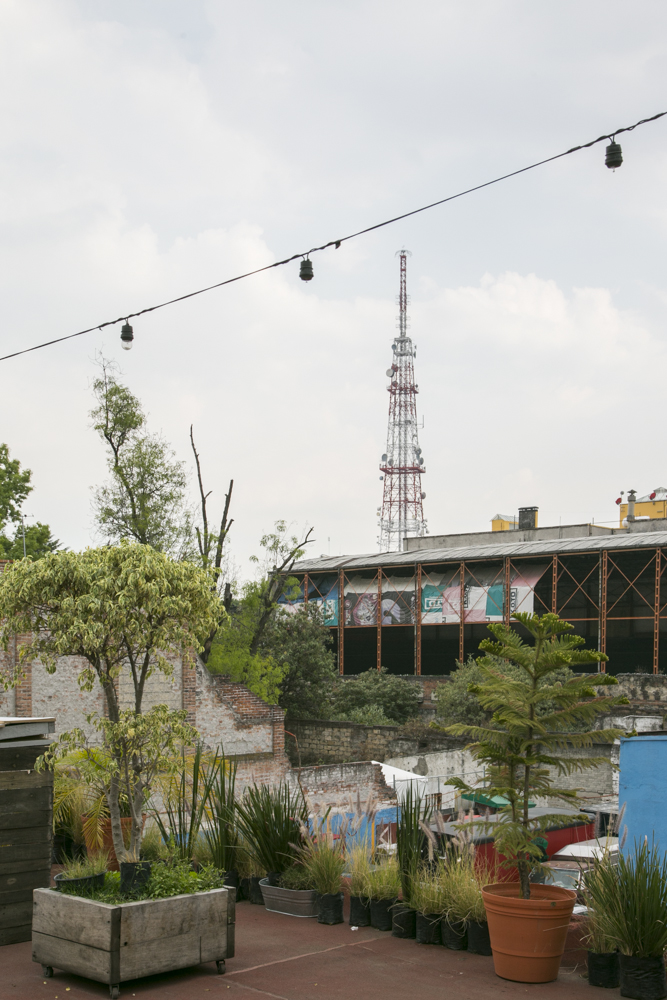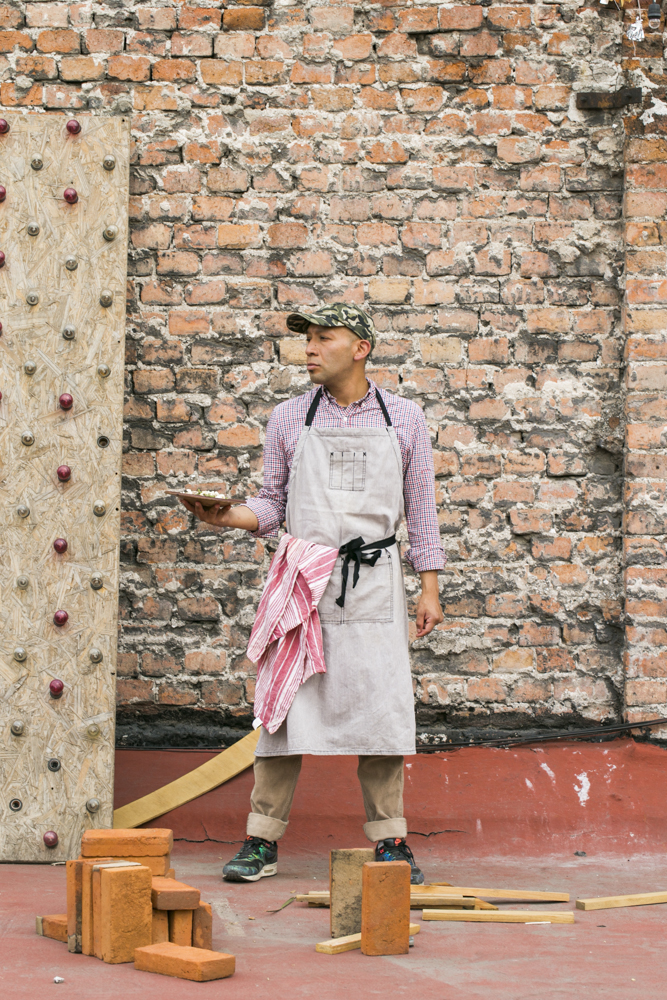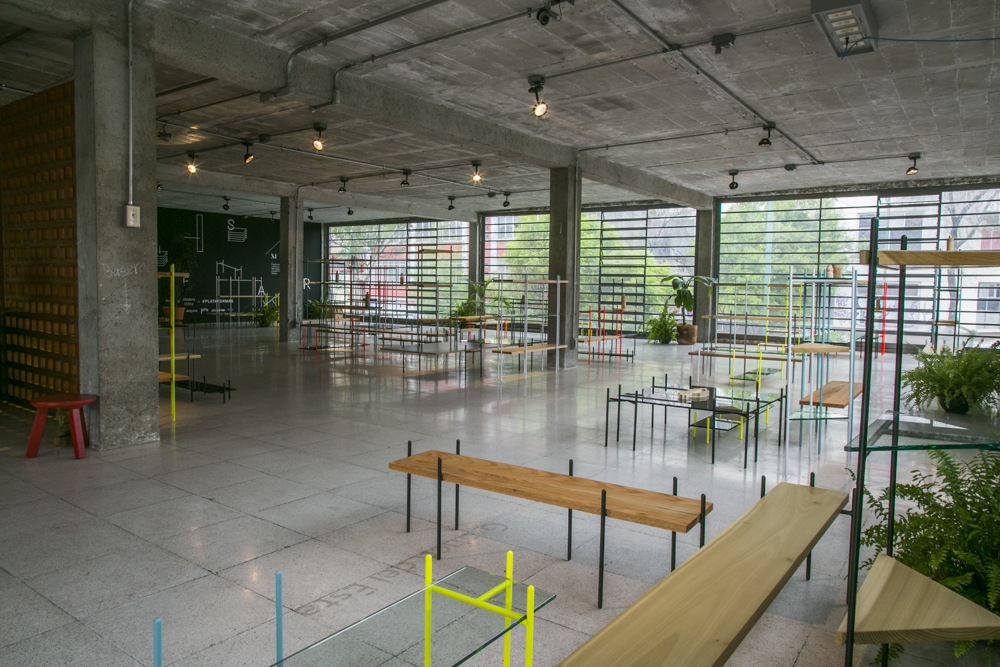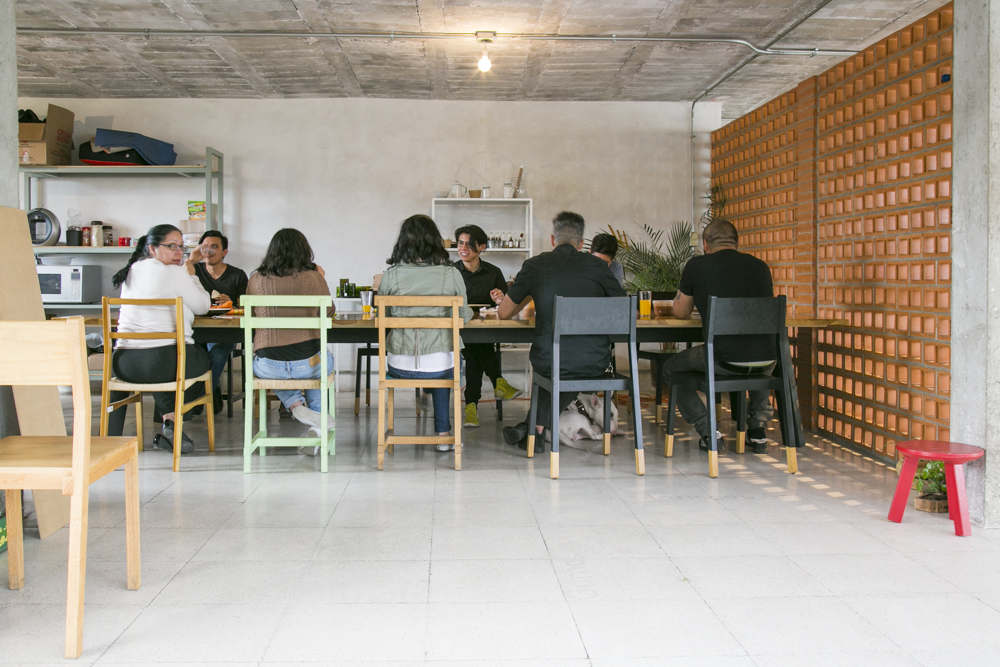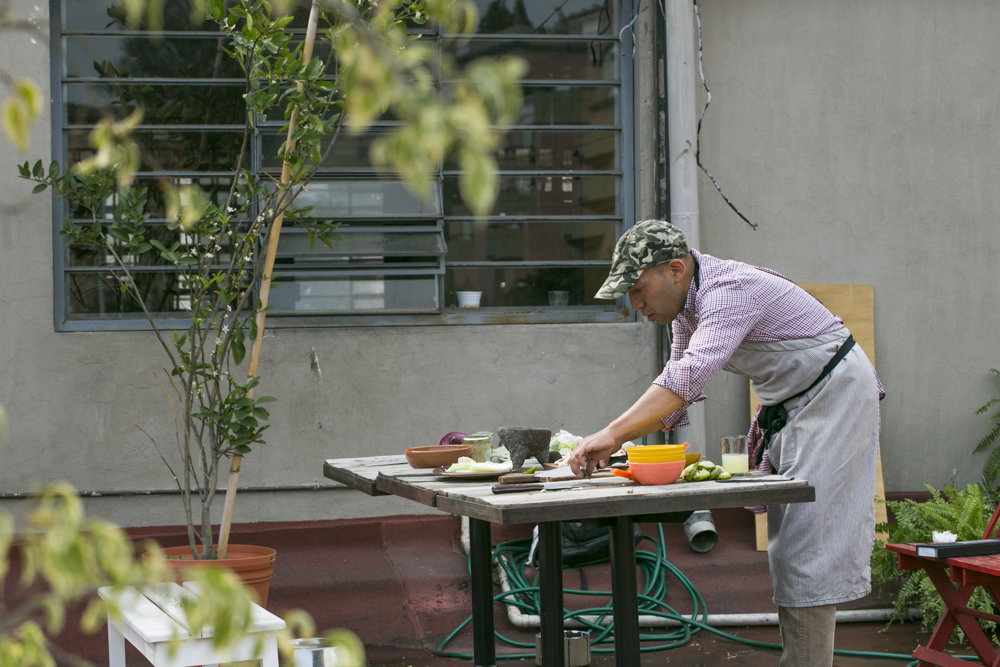Shitake Mushrooms, Sea Beans, Arame Popcorn and Vanilla Bean Salt
Hugo Duran’s Vegan Ceviche
NOTES
Though the intrigue of this recipe is that it is indeed vegan, this marinade would work beautifully with a firm flesh white fish to make a more classic ceviche. Hoja Santa is a commonly used Mexican herb that can be found at your local Mexican grocer, if you are lucky. It has a slight anise flavor and is lovely and bright. If you cannot find it, use a pinch of fennel fronds. Sea beans are fabulously crunchy little succulents that taste of sea brine, and can be found at your specialty grocer.
RECIPE
DIFFICULTY
MODERATE
SERVES
2
PREP TIME
20 MINS
Marinade
-
1/3cupfreshly squeezed lime juice
-
1/2tbspeeled ginger, roughly cut
-
1/4wholecelery stalk, without leaves
-
1clovegarlic
Ceviche
-
25wholeshitake mushrooms, stems removed
-
1/3cupsea beans (salicornia)
-
1/3smallred onion, thinly sliced
-
3tbsdehydrated arame seaweed
-
2tbscoarse sea salt
-
1/2wholevanilla bean
-
5-10slicesserrano chili, as thin as possible
-
1tbsthinly sliced hoja santa leaf
-
1/4cupextra virgin olive oil
-
2tbscoarse sea salt
-
1tbsplain popcorn
I suppose it would be obvious to say that when I travel, I spend most of my time wandering through food markets, asking questions about the local produce and culinary customs, putting things in my mouth and taking pictures. But, even more valuable than this brand of aimless exploration, is this experience of shadowing a local chef as they make their way with purpose through their local haunts, shopping for an event or maybe the ingredients for a salad? Last week, I had the pleasure of doing just that with musician, thinker, chef and Mexico City native, Hugo Duran. Hugo has had many lives and traveled the world, and is now back in his hometown, putting together private events, initiating pop-ups and collaborating with designers to rethink the way we brand, prepare and think about some very traditional Mexican ingredients. Hugo took me to a host of his favorite markets, and we even ate ceviche at the specialty Mercado de San Juan, before going off to make his own version (there’s nothing like pre-gaming for a vegan meal with some corvina sashimi fed to you straight from the fish monger’s hands). From the market we went to a friend’s design firm, where Hugo unpacked his backpack full of knives, cutting boards, his apron and mortar pestle, and we prepared our salad with a view of the city.
Hugo Duran in His Own Words
Julia: Tell me about Ingredientes Materiales. How did it start and what was the work you were doing with food?
Hugo: My partners on the project – Andrea, Rigel, Emilio, Alredo, and Marco – are all product designers, and have all been interested in working on a project that involves food. So, they approached me and proposed we integrate the culinary and design disciplines. For our first project, we made an eight course tasting menu based on carintas (Mexican pulled pork). We created an exhibition inspired by the preparation of this dish, and experimented with new designs of the classic copper pot classically used to prepare the pork.
JS: You have had a range of careers, from music to an import business, and now to food. Can you tell me about that journey?
HD: I studied music as a child and became a composer when I was very young. But, it is hard to make a living as a musician in Mexico, so I moved to Germany. I moved back to Mexico after 7 years and started a business importing and distributing beautifully designed home goods. Business was good, but I my heart wasn’t in it. Then, a friend asked me to help at his restaurant – sort of a try at your own risk offer, and I was immediately captivated.
JS: What was your experience of culinary school in Mexico City like?
HD: Culinary school focuses on techniques and methods of French cuisine, which is not always relevant, especially if your main interest is traditional Mexican cuisine. In my opinion, better cooks are made by practice, constant tasting from other kitchens, and a general and continuous study of agriculture, technology, history, and social context.
JS: This is not your first attempt at making ceviches. You had a seafood based pop-up in Mexico City. How did you arrive at that concept?
HD: In Mexico City, it is traditional to eat seafood on the weekend. The marisquerias are often an obligatory stop for hangover rehab, so I opened a seafood focused pop-up that was open every Sunday called Tierrabomba.
JS: What is the story behind this fish-less ceviche.
HD: I love ceviche, and I was asked to create one for a vegan restaurant as an audition for the chef position. It was quite a challenge to remove the fish as the main ingredient of ceviche! I wanted my ceviche to retain a deep-sea taste. In the end, I did not end up collaborating with them (they actually thought the fish-free ceviche tasted too fishy) but this dish became one of my favorites. I still try to improve it every time I make it.
JS: You are involved in a very ambitious project involving Mexican chocolate. Can you explain how that collaboration works?
HD: I’ve always been a chocolate addict, but I became more seriously part of cacao culture when I heard about Hector Galvan, a knowledgable chocolatier. He works on what he calls Agricultura Chocolate, his laboratory and brand is called La Casa Tropical. There, he develops recipes for Mexican cacao in all possible forms. I’ve helped create dishes based on cacao and vanilla, ingredients that Hector knows really well. Cacao has a deep history in Mexican cuisine; it is interesting to find ways to incorporate some Mexican culture into a dish. Cacao is so much more than a dessert.
